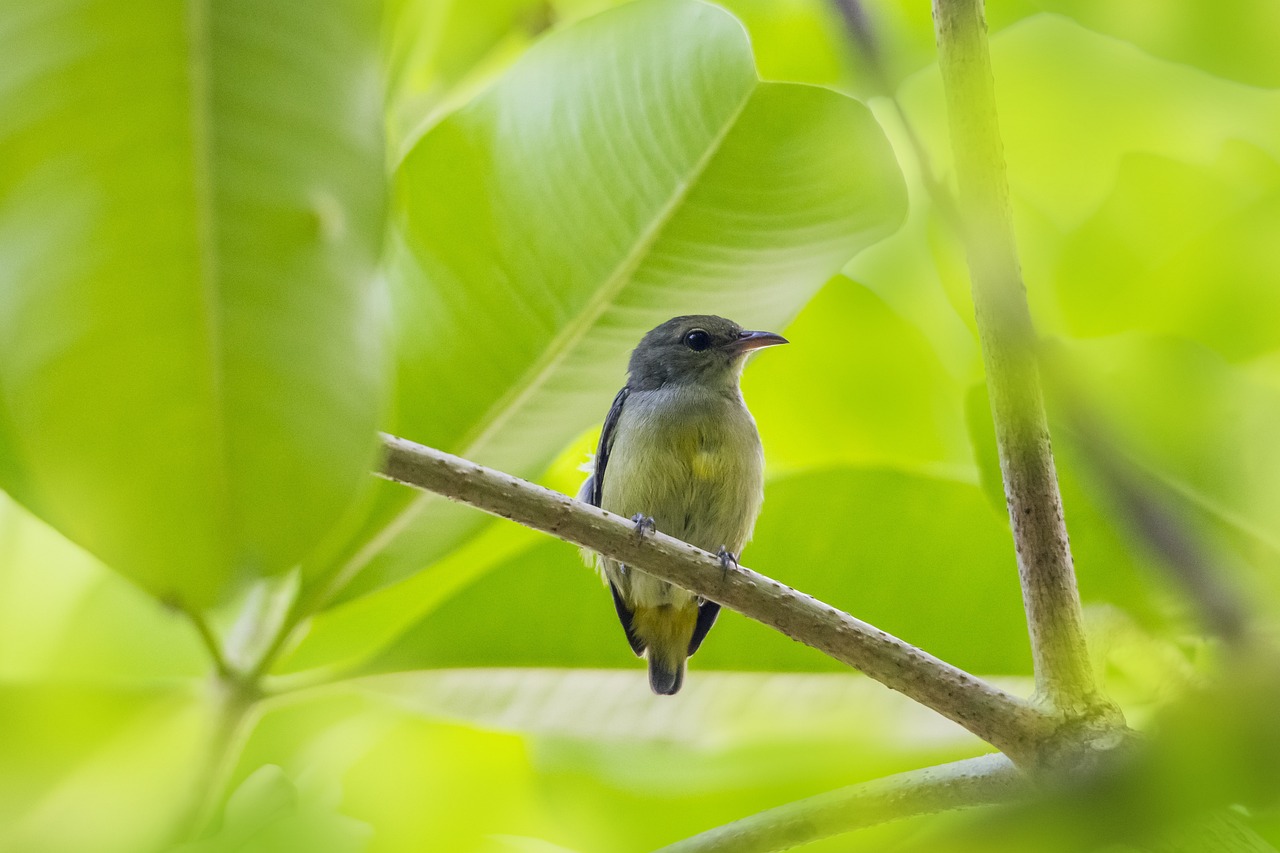Orange-bellied Flowerpecker (Dicaeum trigonostigma)
The Orange-bellied Flowerpecker is a tiny, energetic bird native to Southeast Asia, known for its bright colors, rapid movements, and preference for nectar and fruit. It is often seen flitting around flowering trees and shrubs, playing a vital role in seed dispersal and pollination.
Physical Description
- Size: 8–10 cm (3–4 inches)
- Weight: 7–12 g
- Plumage:
- Males:
- Blue-gray back and head.
- Bright orange belly and chest.
- Small white patch on the throat.
- Females:
- Duller olive-green back with a yellowish-orange belly.
- Males:
- Bill: Short, curved, and adapted for nectar feeding.
Habitat & Distribution
- Native to:
- Found in India, the Philippines, Malaysia, Indonesia, Thailand, and Myanmar.
- Habitat Preferences:
- Lowland forests, gardens, mangroves, and plantations.
- Frequently seen in urban areas with abundant fruiting and flowering plants.
Behavior & Diet
- Diet: Primarily nectar and fruits, but also consumes:
- Small insects and berries.
- Prefers mistletoe fruits, playing a key role in seed dispersal.
- Foraging Behavior:
- Moves quickly, often hanging upside down to reach nectar.
- Frequently seen in small groups or pairs.
- Vocalizations:
- High-pitched, rapid “tsip-tsip” calls.
Breeding & Nesting
- Breeding Season: Varies by region, often March–August.
- Nesting Sites:
- Builds a hanging, pouch-like nest made of fibers, grass, and spider silk.
- Eggs:
- Lays 1–3 small white eggs.
- Incubation:
- Around 12–15 days, mainly by the female.
- Fledging:
- Chicks leave the nest after 14–18 days.
Threats & Conservation
- Threats:
- Habitat loss due to deforestation and urbanization.
- Decline in mistletoe plants (their primary food source).
- Conservation Status:
- Least Concern (LC) on the IUCN Red List.
- Populations are stable due to their adaptability.
Interesting Facts
- The Orange-bellied Flowerpecker is one of the smallest birds in Southeast Asia.
- It plays a crucial role in seed dispersal, especially for mistletoe plants.
- Unlike sunbirds, which hover, flowerpeckers perch while feeding on nectar.
Summary
The Orange-bellied Flowerpecker (Dicaeum trigonostigma) is a small, colorful, and active bird found in forests, gardens, and mangroves of Southeast Asia. Known for its nectar and fruit diet, it helps with pollination and seed dispersal, especially for mistletoe. Despite habitat loss, its adaptability ensures stable populations, making it a common yet vital part of tropical ecosystems.
Visited 81 times, 2 visit(s) today
Views: 400
Subscribe to the newsletter:
